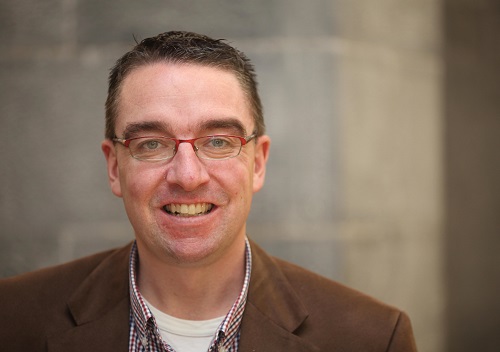
What is clinical legal education? It’s an entirely logical question to raise for most outside the legal academy or legal profession, especially for those who have undeniably cynical views about lawyers and the legal system.
Clinical legal education is a broad church and, hence, is not amenable to easy definition.
Among the best attempts to encapsulate it comes from one of the leaders of the global clinical movement, Richard Wilson, emeritus professor at American University’s Washington College of Law.
He says: “Clinical education, as the name implies, involves law students in learning law by guided practice during law school. Ideally, that setting involves real cases, clients, or other project-based work with client communities, usually with the poor or other marginalized populations without access to counsel. Clinical education, intensely learning-focused, is challenging the dominant traditions of teacher-centric legal education: the case method, largely taught using casebooks in the United States, and the lecture, still used almost exclusively in Europe and other traditional law schools throughout the world.
“Clinical education does not seek to overthrow that tradition, but to offer an alternative, additional route to learning, grounded in modern ideas of cognitive science and adult learning. In fact, clinical legal education is more than a method – it is a pathway toward personal and professional identity for students, manifesting itself in each student’s distinctly personal experience, and it is a model, not only for all professional lawyering, but particularly for one of conscience in the service of individuals, groups, or populations otherwise without equal access to law or lawyers.”
While law schools in the US prominently embraced clinical legal education decades ago and were soon followed by their counterparts around the world, Western Europe was slow to come around.
Owing to the vision of Professor Gerard Quinn, however, the School of Law at NUI Galway was an “early adopter” in Ireland and has been recognised nationally and internationally for its innovative approach to offering a training to students that is rooted in theory and bolstered by exposure to law in practice.
One element of the clinical legal education programme is the part-time placements available to final year undergraduate students. This optional one semester module – Clinical Placement – gives students the chance to see how the law and legal system they learn about in the lecture theatre operate in the “real world” beyond the University’s campus.
Instead of an ordinary examination, students are evaluated by their supervisors on their performance in the workplace and on an essay in which they must respond to a number of questions posed to them about the placement.
At its core, and in keeping with the School of Law’s strong reputation as a hub of human rights and public interest law expertise, many of the placements are focused on instilling in students a cognisance of how marginalised groups and individuals are served – or all too often not well-served – under the status quo and of the duty of lawyers to foster expanded access to justice.
The extent to which students, placement supervisors, and, in turn, their service users have gained from the mutually beneficial partnerships at the heart of this module is extraordinary.
For many years, law students have worked with Community Law and Mediation, which has offices in Coolock on Dublin’s northside and in Limerick. Their aim is “to provide people in our communities with expert legal, mediation, and education services they would not otherwise have access to and in doing so, to address underlying issues of injustice and exclusion while working for real change.”
The demand for their assistance has escalated enormously during the pandemic.
As such, two of our students, Nicole Mullan, in her final year of the LLB, and Aoife Donovan, a third year BCL candidate, are supporting the team of skilled solicitors and committed staff to meet the serious housing and other needs of their clients in Limerick and Dublin remotely.
Aoife Donovan comments that “she loved the placement” and that “it was a great opportunity to learn how to create timelines for cases, anonymise and review client documents in connection with active matters at the Residential Tenancies Board. Knowing that my efforts were helping to make a difference in people’s lives in an incredibly difficult period for them was amazing.”
The Galway-based barrister Lorraine Lally, who is a proud public interest lawyer and equality activist, has long been a steadfast partner of and advocate for the clinical legal education programme in the School of Law.
Last year, in a case that garnered national media attention, students aided Ms Lally in her successful representation of an Athenry man who overturned a deportation order.
Over the past few months, three students – Áine Cleary, Amber Gilgan and Clíona Ní Laoi – have been working on a range of issues.
These include: a submission to the Galway City Development Plan on housing with the aim of ensuring that accessibility and other factors that are central to European development goals are fully accounted for; presentations on the equality guarantee in Article 40.1 of the Irish Constitution, equality of women in sport and marine protection legislation; and profiling the lives and accomplishments of Irish woman judges.
In all of these varied tasks, the students say that they are “encouraged to think outside the box”; that they are “required to get out of their comfort zone”; that “it’s great in a legal sense, yet much bigger and more beneficial than that”; and that they are inspired by Ms Lally’s “work ethic and dedication to the causes she cares so much about.”
This is merely a small sampling of the types of work to promote diversity, equality and inclusion that students in the School of Law are undertaking under the broad umbrella of clinical legal education.
Many postgraduates in the Irish Centre for Human Rights are involved in “movement lawyering” with community organisers and practitioners in the human rights law clinic.
There are also a growing number of full-time, year-long placements in which these goals are to the fore.
Moreover, through a public interest externship exchange programme with Suffolk University Law School in Boston, students who have just finished their primary law degrees work every summer with organisations, such as the New England Innocence Project, Greater Boston Legal Services and the Legal Innovation and Technology Lab at Suffolk on an ongoing project “to rapidly create mobile-friendly accessible versions of online court forms and pro se materials in multiple-languages for key areas of urgent legal need amid the COVID-19 crisis.”
Notably, while coronavirus has been an impediment to our students’ engagement in this important work, it has not been an insurmountable obstacle.
Technology has proved a hugely valuable tool in this regard.
In sum, flowing from their participation in the School of Law’s clinical legal education programme, there is a sizable cohort of NUI Galway graduates in Ireland and around the world who readily identify as “lawyers for others” and believe passionately that they have a role to play in promoting a more equal, tolerant and just society.
By continually endeavouring to update our clinical offerings, we hope to add considerably more of our students to their ranks.

Larry Donnelly is a Boston born and educated lawyer, a Lecturer and Director of Clinical Legal Education in the School of Law and a regular media contributor on politics, current affairs and law in Ireland and the US.